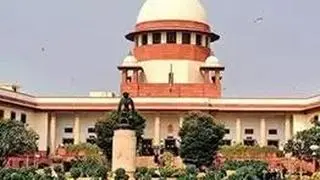Ever since its statehood six decades ago, Kerala’s electoral politics has been bipolar — the Communists and their allies forming one front and the Congress and its coalition partners, another.
And, in nearly four decades since 1977, the State has witnessed a cynical five-yearly ‘political cycle’, wherein neither the United Democratic Front (UDF) nor the Left Democratic Front (LDF) came to power successively for two terms. There were never a third front on the horizon.
The significance of the 2016 Assembly elections, hence, is that the bipolarity is being broken. The BJP, which had only a 6 per cent vote share in the 2011 elections, and which so far has not won a single seat in the Assembly, is emerging as the third front.
Its strategic alliance with the Ezhava community, the largest Hindu caste in Kerala with one-fifth of the State’s total population, has helped the BJP to project itself as an alternative.
“The BJP front is not a major force to reckon with, as yet,” points out Appukuttan Vallikkunnu, former CPI(M) leader, senior journalist and political commentator. “But, in a situation where the vote share between the UDF and the LDF is wafer thin, whose votes the BJP front grabs more will determine the electoral outcome.” The swing of the Ezhava vote, which traditionally favoured the LDF, would be a key factor.
Narrow gapThe gap between the vote shares of the two fronts has always been narrow. For instance, in the 2011 elections, the LDF’s share was 45.39 per cent, while the UDF’s was 46.03. But, the UDF stayed in power for five years.
In the October 2015 local-body election, the LDF share was 37.36 per cent and UDF, 37.23 per cent. However, the BJP’s vote share, which was 6.09 per cent . in the Assembly elections, increased dramatically to 13.28 per cent.
Leaders of both the UDF and LDF claim that the BJP will not ‘open its account’ in the May 16 Assembly election, but a recent survey by a TV channel predicts that it will get two-five seats. Even if it manages to get only one seat, it would be a huge achievement for the BJP.
Ever since he was elected BJP president, Amit Shah has wanted the Kerala unit to work towards opening its account in the State.
In the 2014 Lok Sabha elections, his strategies had helped the BJP win 73 of the 80 seats in UP. But Kerala is different: since Hindus make up only 55 per cent of the population, a big thrust on Hindutva may boomerang. Instead, the BJP leadership cultivated Vellappally Natesan, a wealthy businessman and long-time general secretary of the Ezhava organisation, Sree Narayana Dharma Paripalana Yogam, and urged him to float a party.
The Bharat Dharma Jana Sena (BDJS) was floated in December 2015. The BJP made it an NDA ally and handed it 37 Assembly seats to contest. Even in UP, the BJP had given only two of the 80 Lok Sabha seats to the Apna Dal.
Ground-level support
The Sangh Parivar, which has an extensive grassroots network across Kerala, is providing ground-level support for the young, politically inexperienced BDJS with a view to securing Ezhava votes for the BJP.
It has been reckoned that two-thirds of the Ezhava votes traditionally went to the LDF, and the balance to the UDF. Political pundits point out that the majority of Ezhavas do not favour the tie-up with the BJP.
But a substantial number — particularly the urban, educated, apolitical middle-class — are happy that the upper-caste-dominated national party is ‘accepting’ the community.
“The extent of the damage the BJP-BDJS combine causes to the UDF’s and LDF’s vote banks will be a key factor in determining the outcome in a large number of constituencies,” notes Vallikkunnu. “I wouldn’t be surprised if the election throws up a hung Assembly.”








Comments
Comments have to be in English, and in full sentences. They cannot be abusive or personal. Please abide by our community guidelines for posting your comments.
We have migrated to a new commenting platform. If you are already a registered user of TheHindu Businessline and logged in, you may continue to engage with our articles. If you do not have an account please register and login to post comments. Users can access their older comments by logging into their accounts on Vuukle.